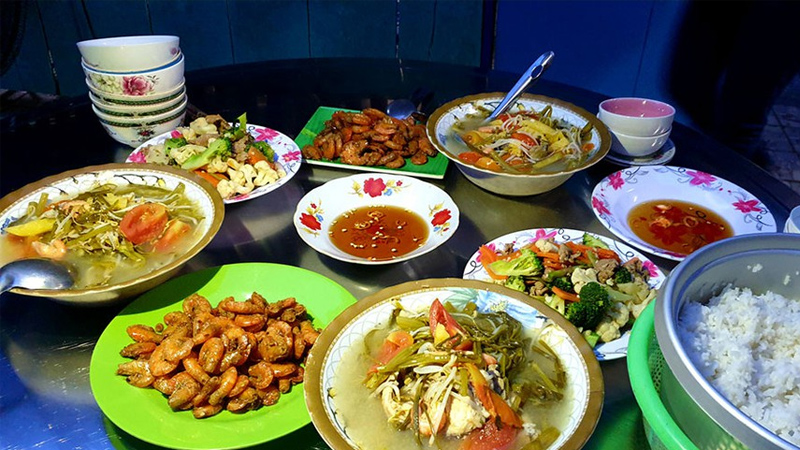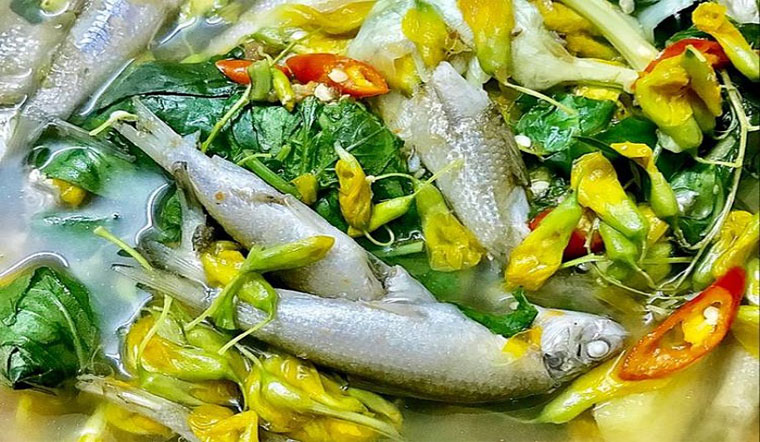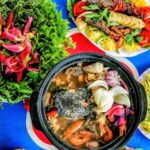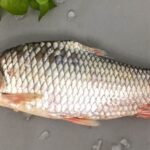1. Climate Influence:

Southern Vietnam’s proximity to the Equator blesses it with a tropical monsoon climate, resulting in warmer temperatures than other regions. To combat the heat, the local cuisine emphasizes dishes abundant in vegetables, often served raw or lightly cooked. Additionally, the belief that sugary flavors counteract oppressive heat further cements the incorporation of sweeter tastes.
2. Regional Habits:

The Mekong Delta is renowned for its bountiful harvests of tropical fruits, naturally sweeter and more flavorful. As a result, the local palate has evolved to favor sugary tastes, seamlessly integrating them into daily meals. This consistent inclusion of sweetness in their diet has even led to the charming notion that the region’s people’s warm and friendly speech mirrors the flavors of their cuisine.
3. Cultural Influences:

Southern Vietnam’s cultural diversity, with its significant Khmer and Chinese populations, has left an indelible mark on its cuisine. Chinese culinary traditions introduce stews, noodles, and starch-based dishes, while Khmer cuisine showcases a love for spicy flavors and a unique blend of salty and sweet tastes. Signature Khmer dishes, such as curry with jackfruit and chicken or the use of coconut water as a cooking base, attest to this fascinating fusion.

These factors collectively shape the Southerners’ affinity for sweeter flavors, whether derived from sugarcane or the region’s abundant tropical fruits. When visiting the Mekong Delta, remember to indulge in the local cuisine and embrace this unique aspect of their cultural heritage!
Discover More:
– What are Nang Trees? What Dishes Can be Made with Nan Bap?
– Exploring the Benefits of a “Healing” Vacation: Why Families Are Choosing This in 2023
– Why Do Many Families Choose a ‘Healing’ Vacation Spot for Summer 2023?
– Remembering the Floating Season: A Story of Custard Apples and Flooding
– A Fish Species Like “Water Ginseng”: Tasty, Nutritious, and High in Demand
Unveiling the Secrets of Ca Mau’s Water Garlic and Its Fascinating Delights
Cà Mau, the southernmost province of Vietnam, is not only renowned for its vast melaleuca forests but also boasts a unique specialty – water chives. This aquatic vegetable, known locally as “he nuoc”, thrives in the province’s lush wetlands and has become an integral part of the local cuisine. With its delicate flavor and tender texture, water chives have captivated the hearts of both locals and visitors alike, becoming a must-try delicacy when exploring the enchanting lands of Cà Mau.
Taste Bud Tour: A Culinary Journey Across Vietnam, Starting at Just 1,000 VND. Exclusive to ShopeeFood Festival.
The ShopeeFood suggestions will take you on a culinary journey across Vietnam, right from the comfort of your home. Indulge in the unique and enticing flavors of the region with our carefully curated list of dishes, each representing the essence of their respective locales. It’s a delicious exploration of the country’s diverse and vibrant food culture, one that will tantalize your taste buds and leave you wanting more.



































